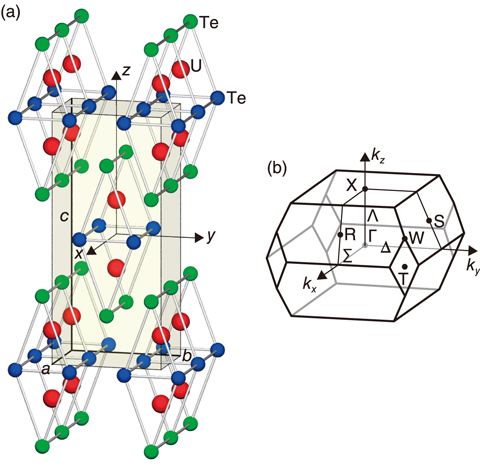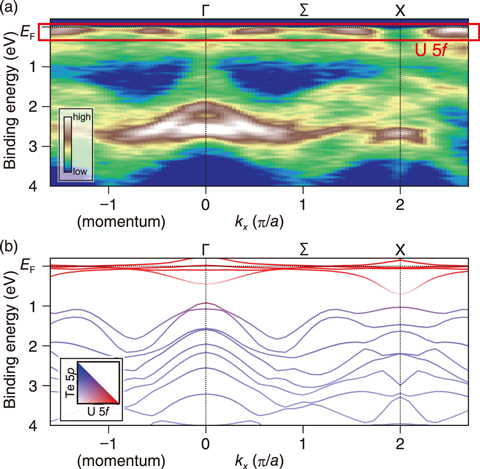
Fig.5-18 Crystal structure and Brillouin zone of UTe2

Fig.5-19 Observed and calculated band structure of UTe2
Actinide compounds, including uranium compounds, have complex properties, such as diverse magnetism and superconductivity, and deserve a unique position in strongly correlated electron systems. In late 2018, UTe2 (Fig.5-18) was discovered to exhibit a novel superconductivity, thus attracting worldwide attention. To understand this novel mechanism of superconductivity, the electronic structure of the compound must first be clarified.
The JAEA beamline, SPring-8 BL23SU, can safely handle radioactive materials such as uranium compounds and is the only facility worldwide with access to the soft X-ray regime required for actinide research. Soft X-ray angle-resolved photoemission spectroscopy is an experimental technique used to directly observe the electronic structure of materials by measuring the kinetic energy and angular distribution of the emitted photoelectrons. We have revealed the electronic structure of many uranium compounds. Based on that experience, we rapidly carried out the research on UTe2 and clarified the electronic state of UTe2 for the first time worldwide.
The observed band structure of UTe2, obtained by soft X-ray angle-resolved photoelectron spectroscopy, is shown in Fig.5-19(a). Here, the highest intensity corresponds to the band structure. The band structure of the U 5ƒ electrons, which is directly related to superconductivity, was successfully observed. The theoretically calculated band structure, shown in Fig.5-19(b), clarifies the overall band structure. A strong contribution by the U 5ƒ states was observed in the vicinity of the Fermi level, which determines the superconducting properties of this compound. These results indicate that the U 5ƒ states in UTe2 have an itinerant nature with an electron correlation effect. This result provides fundamental information for understanding the electronic structure of UTe2 as well as a model for describing the superconductivity in this compound.
This study was conducted on “Elucidation of the three-dimensional electronic structure of heavy-fermion superconductors”, supported by the Japan Society for the Promotion of Science (JSPS) KAKENHI Grant-in-Aid for Scientific Research (C) (No.18K03553), and on “Elucidation of the electronic structure of strongly correlated uranium compounds by three-dimensional ARPES”, by Grant-in-Aid for Scientific Research on Innovative Areas (Research in a proposed research area) (No.16H01084).
(Shin-ichi Fujimori)
<Previous: 5-7 | Next: 6 HTGR Hydrogen and Heat Application Research>